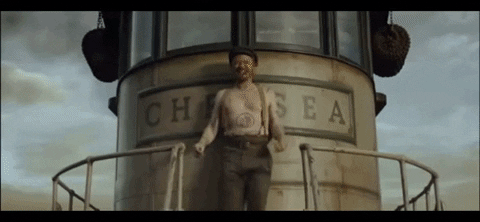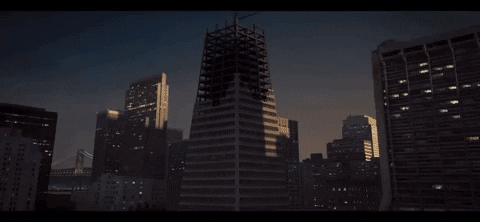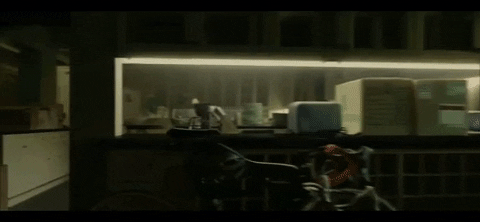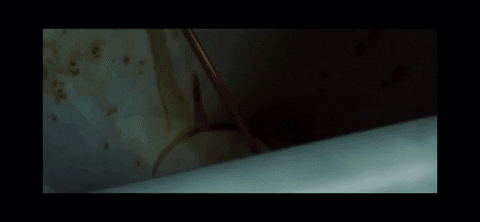David Fincher
“Music’s a funny thing because it is entirely subjective. People are connected to the beat that’s in their head… certain music works, and certain music doesn’t.” – David Fincher, 3 January 2015
Watching any David Fincher film, you can sense that the director has a sense of rhythm to his filmmaking style. There are certain films where this may not be so obvious—even though ZODIAC is a talking-heads procedural crime saga that clocks in at nearly three hours, the majority of scenes are very short and rarely last longer than six minutes. Then there are his films where this sensibility is apparent—FIGHT CLUB feels like it uses The Dust Brothers’ score as a metronome to let the story zip along from beginning to end. Even when Jesse Eisenberg and Rooney Mara were rehearsing the opening scene in THE SOCIAL NETWORK, Fincher observed with a stopwatch in his hand; challenging them to deliver their lines at a faster pace so that the dialogue can flow in the correct way.
No wonder Fincher cut his teeth making music videos before moving onto feature films. He started his career as a Visual Effects Assistant for ILM, but it was his music video and commercial videography that got people noticing his distinct style.
Foreigner - “Say You Will” (1987)
This was one of the earlier music videos where Fincher uses shadows to transition between extreme close shots. The portraits of the models and band members are sometimes seen in the reflection of an eye. The shots never linger for that long (as with majority of pop music videos) and are heavily cut to the rhythm of the beat.
Sting - “Englishman In New York” (1987)
As with the Foreigner video, the Marsalis Jazz band and Sting himself are shot in stark black and white portraits against the titular cityscape. The brief interlude of the booming drums at 2:33 is set to lots of whip pans along the NYC streets.
The video is interspersed with random New Yorkers presenting themselves by looking at the camera.
A similar motif is used at the last moments of THE CURIOUS CASE OF BENJAMIN BUTTON as we see several characters that the protagonist met during his lifetime acknowledge the camera.
Michael Jackson - “Who Is It?” (1991)
The music video for what is supposedly Jackson’s break-up song. It’s cut between the artist performing the song looking over the city skyline from a large window and his girlfriend (played by model Yasmin Le Bon) changing identities. The video is filled with distinct monochromatic colours—Jackson’s shots are against a rich gold, whereas Le Bon’s are filmed with a cobalt blue. This type of visual style has been associated with Fincher through his feature filmography—again, using BENJAMIN BUTTON as an example, the present timeline is shot in blue hues and while the past is filtered through desaturated yellows.
The Rolling Stones - “Love Is Strong” (1994)
An incredibly pioneering music video for its time. The band and several models jump, fall, and pose in romantic embraces while being the same size as skyscrapers in (again) New York City. The use of CGI is seamless and shows Fincher’s confidence in FX work. Also, it also shows another visual motif for Fincher—shooting architecture.
One of the most memorable shots in ZODIAC is the time lapse creation of the San Francisco Needle building.
Architecture is put to great use in the opening credits of PANIC ROOM, sequenced to the baritones of Howard Shore’s score:
Nine Inch Nails - “Only” (2005)
We see Trent Reznor’s face perform the song in a pin screen and a Newton’s Cradle move to the drums of the track. The whole office setting is CGI and also sets the focus on inanimate objects. Fincher has done this regularly during his filmography, particularly in PANIC ROOM and FIGHT CLUB:
The commercial that truly established Fincher as a talent to watch was his advertisement in 1985 for the American Cancer Society. It shows an embryo inside the womb smoking a cigarette.
It perfectly telegraphs Fincher’s sensibilities to pull no punches and wants to you feel the grime and shock of the subject matter.
Following this, Fincher became a co-founder of Propaganda Films. It’s worth noting that this is the production company that granted a series of seminal filmmakers their first work, including Spike Jonze, Antoine Fuqua, Michel Gondry, Zack Snyder, and Gore Verbinski. The line of directors linked to this company will show up multiple times here in the upcoming months.
For more content on this subject, I recommend Patrick Willems’ brilliant analysis video on David Fincher and how he cut videos for Madonna and George Michael:






